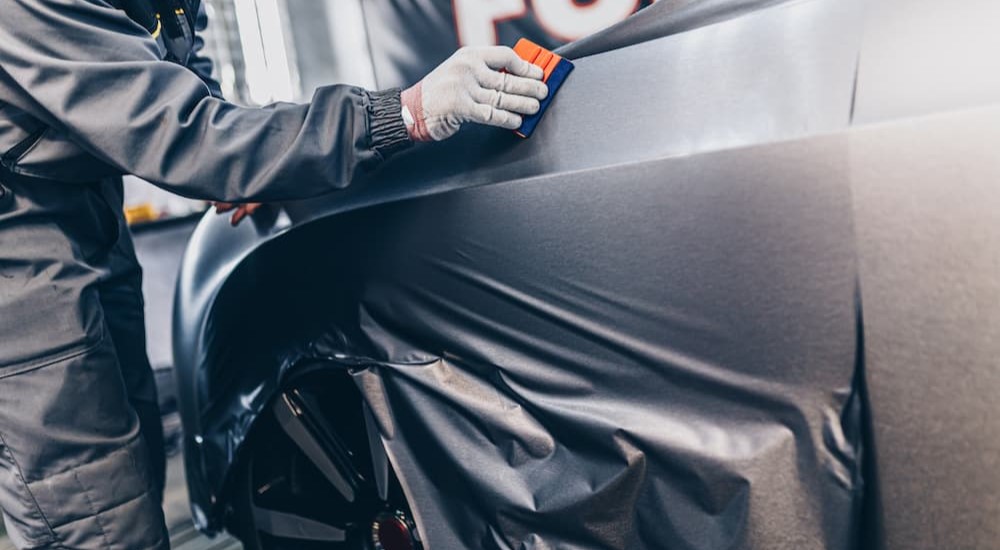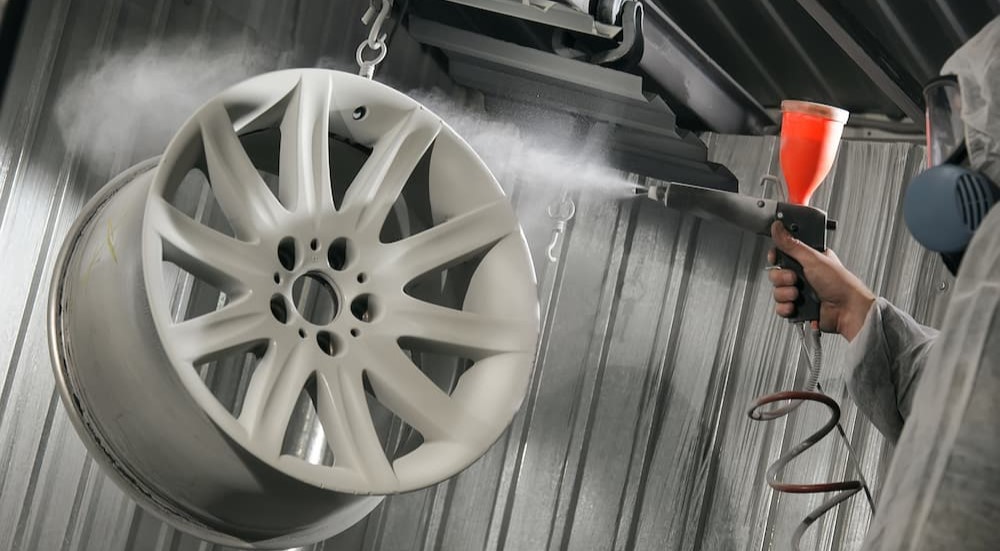For decades, chrome accents, trim, and badges have been the industry standard. However, popular opinion is starting to swing the other way. Chrome was once seen as a long-lasting way to protect metal against corrosion and make cars look better. However, it’s now widely known that the hexavalent chromium compound can cause severe health issues during the application process. As such, many automakers are switching to cheap plastic alternatives—and others, like Stellantis and Volkswagen Group, are getting rid of chrome altogether.
DIYers are also getting rid of existing chrome accents for aesthetic reasons. Current style trends point towards a sleek appearance, and chrome is anything but. By removing the chrome, you can customize your car’s look. Chrome deletes also reduce maintenance since keeping your car looking good takes less work.
There are several potential methods if you are interested in dechroming your car. This guide looks at the most popular ways to dechrome a car and examines the good and bad of each. Note that for most of these methods, you may need to temporarily remove the existing chrome accents from the vehicle for the best results. This will require plastic pry tools, and I also recommend a heat gun to soften the trim clips.
Plasti Dip
While there are several brands of rubberized automotive coatings, Plasti Dip is the most popular. Originally intended to protect parts against moisture and corrosion, it has become a popular DIY way to dechrome vehicles.
Pros:
- Plasti Dip is easy to use, cost-effective, and readily available as a liquid or spray can.
- It offers excellent environmental protection for the trim and can withstand temperatures from -30 to 200 degrees.
- It comes in a variety of colors to accent your main finish.
- The material is flexible, so it can absorb flying rocks and other impacts without scratching.
- You can quickly reverse your dechroming by peeling the Plasti Dip away.
Cons:
- Plasti Dip requires a special cleaner, and you may not be able to machine-wash the vehicle since certain water jets are powerful enough to blast the material away.
- Even a well-maintained Plasti Dip covering will usually only last three to five years, especially in harsher environments.
- It has a textured surface that can awkwardly contrast the vehicle finish and trap dirt.
- It is more likely to have visible seams and other flaws.
Vinyl Wrap
Another common chrome delete trend is vinyl wrapping—the same technique that has become the alternative to painting race cars. The adhesive vinyl film is specially cut to fit over the chrome pieces and then stuck in place. You can get pre-cut kits or cut the vinyl yourself.
Pros:
- Vinyl wrap is a cost-effective and reversible option for removing chrome.
- The vinyl will protect the original surface from fading, scratches, dirt, and other damage.
- While most people choose gloss or matte black, you can get vinyl in any color, including body-matching finishes and metallics.
- The mirror-like finish of the vinyl will add a nice touch.
- You can easily clean the film using standard vinyl and plastic care products—or in the case of major damage, simply replace it.
Cons:
- Vinyl wraps require precision and care to apply—being even a smidge off at one end of a part can cause big misfits, and you must also watch out for air bubbles.
- The quality of vinyl can vary widely, so you need to do your research and make sure you’re getting a good wrap.
- Although vinyl can disguise minor scratches and scuffs, any existing dents, gouges, or other major imperfections will still be visible beneath the wrap.
- Like Plasti Dip, most wraps will last about three to five years even if well cared for.
Aftermarket Parts
What if you’re 100% sure you want the chrome to be gone forever? Replacing the chromed parts with non-chromed versions will achieve this. Many companies make aftermarket chrome delete kits, and OEM versions are occasionally available, too.
Pros:
- It is a permanent solution for those who know they don’t want chrome accents any longer.
- You may be able to find grilles, door trim, and other pieces that are shaped differently than the original trim, which can offer aesthetic and even minor performance benefits.
- You can save the original chromed parts and re-install them later if you need to.
Cons:
- It is more expensive to replace parts than add coverings, so your budget may be a factor.
- You have to be careful to get high-quality parts that fit—saving a few bucks now can cost you a lot more later if parts break loose or are easily damaged.
- There’s no guarantee that chrome delete parts will be available for your vehicle, and colors may be limited.
- Extensive aftermarket mods can adversely affect the car’s resale value and even void the warranty.
Painting
If you want long-term dechroming but don’t want to replace existing parts (or can’t find them), painting over the chrome is a possible method. Like repainting a body panel, this will require primer, paint, and a clear coat in a multi-step process.
Pros:
- Painting usually costs less than replacement parts while also being a permanent solution.
- It will give you the most color options since there are hundreds of factory and aftermarket hues.
- Many paints are available that resist chips and fading for durability.
Cons:
- Both modern plastic chrome and traditional chrome plating can be challenging to paint over.
- Painting over plastic chrome will require scuffing the surface and then applying multiple coats of self-etching primer.
- For chrome plating, it may require ultrasonic cleaners or potentially dangerous chemicals like hydrochloric acid and sodium hydroxide (aka lye).
- This is the most time-intensive option since the primer, paint, and clear coat all need time to dry.
- When painting trim that can’t be removed, like chrome headlight rings, you must be extra careful not to get paint on the lenses as it can permanently damage them.
- There is no way to reverse the process—you will have to buy replacement parts.
How Much Does it Cost to Dechrome a Car?
This mainly depends on the dechroming method. An aerosol can of Plasti Dip, which covers up to 10 square feet, can be found for less than $10 at most hardware and auto parts stores. A 75-foot long, two-inch wide roll of uncut vinyl film should go for about $50, but expect to pay more for wider rolls or a pre-cut kit. Automotive paint can approach $100 per gallon plus the cost of the clear coat and primer. Replacement trim can vary widely based on the manufacturer and quality. Basic trim can be as little as $20 per piece, while premium trim can surpass $150 per piece.
If you’re nervous about screwing up a chrome delete, consider bringing the vehicle to a reputable service shop or car customizer. Professional technicians will be trained in one or more dechroming methods and will apply their steady hands to your project. You can be especially confident in their performance if the shop offers a workmanship warranty. The only real downside to this option is that it will cost a lot more because of labor. A high-quality professional dechroming can be anywhere from $600 to $2,000 depending on the vehicle, the chrome delete method, and whether you want a partial or full delete.
Achieve the Look You Want
Just as there’s more than one way to crack an egg, there’s more than one way to dechrome a car. When done correctly, each option discussed here will let you enjoy a custom look, whether that’s an aggressive style or something stealthy. Even the most expensive dechrome options are usually more affordable than other mods, making it a relatively straightforward way to give your car a dose of personality. Go over each method and decide which one accomplishes your ultimate goals while staying within your price range.



